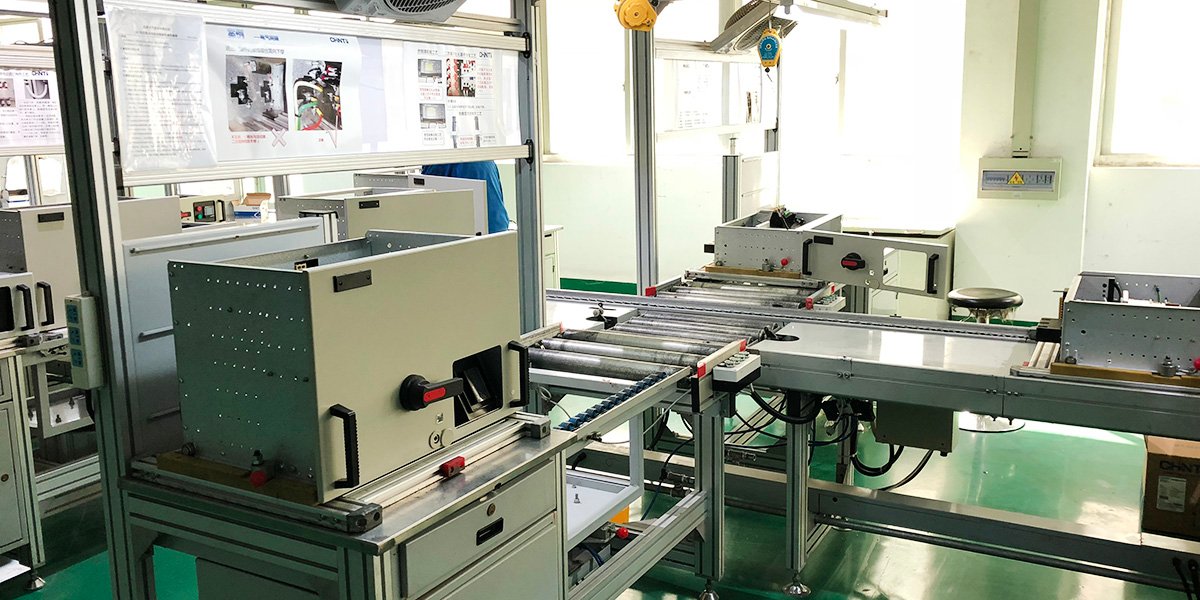Draw out Switchgear Assembly Production Line

The “Draw out Switchgear Assembly Production Line” is a specialized manufacturing process designed to efficiently produce draw out switchgear units, which are an essential component of electrical power distribution systems. This type of production line is equipped with a series of stations where various assembly tasks are performed in a sequential manner.

- Initial Setup and Preparation: The production line begins with the preparation of raw materials, including metal sheets for the cabinet body, drawout mechanisms, electrical components such as breakers and switches, and other necessary hardware.
- Cutting and Forming: The metal sheets are cut to size and formed into the required shapes for the cabinet body and draw out tray. This process often utilizes machines like laser cutters, press brakes, and punching machines to ensure precision and accuracy.
- Assembly of Cabinet Body: At this stage, the various parts of the cabinet body are welded or bolted together. This includes the construction of the frame, mounting of side panels, and installation of the draw out tracks.
- Installation of Electrical Components: The electrical components are then assembled within the cabinet. This involves mounting the breakers, switches, and other necessary parts onto the drawout tray, ensuring that all connections are secure and properly insulated.
- Wiring and Testing: Once the components are in place, the switchgear is wired according to the specific design and requirements. After wiring, the unit undergoes a series of tests to ensure that all electrical connections are correct and that the switchgear operates safely and efficiently.
- Final Inspection and Quality Control: Each drawout switchgear unit is thoroughly inspected for any defects or errors. This includes checking the mechanical integrity of the cabinet and the functionality of the electrical components.

The Draw out Switchgear Assembly Production Line offers significant benefits, including enhanced efficiency, precision, and consistency in manufacturing. It streamlines the assembly process through automation, reducing manual labor and potential human error. This high-throughput system ensures uniform quality control across units, meeting stringent industry standards. Additionally, the production line’s optimization reduces cycle times, leading to faster product delivery and increased overall output. The integration of advanced technologies also facilitates scalability, allowing manufacturers to adapt to fluctuating market demands effectively.
